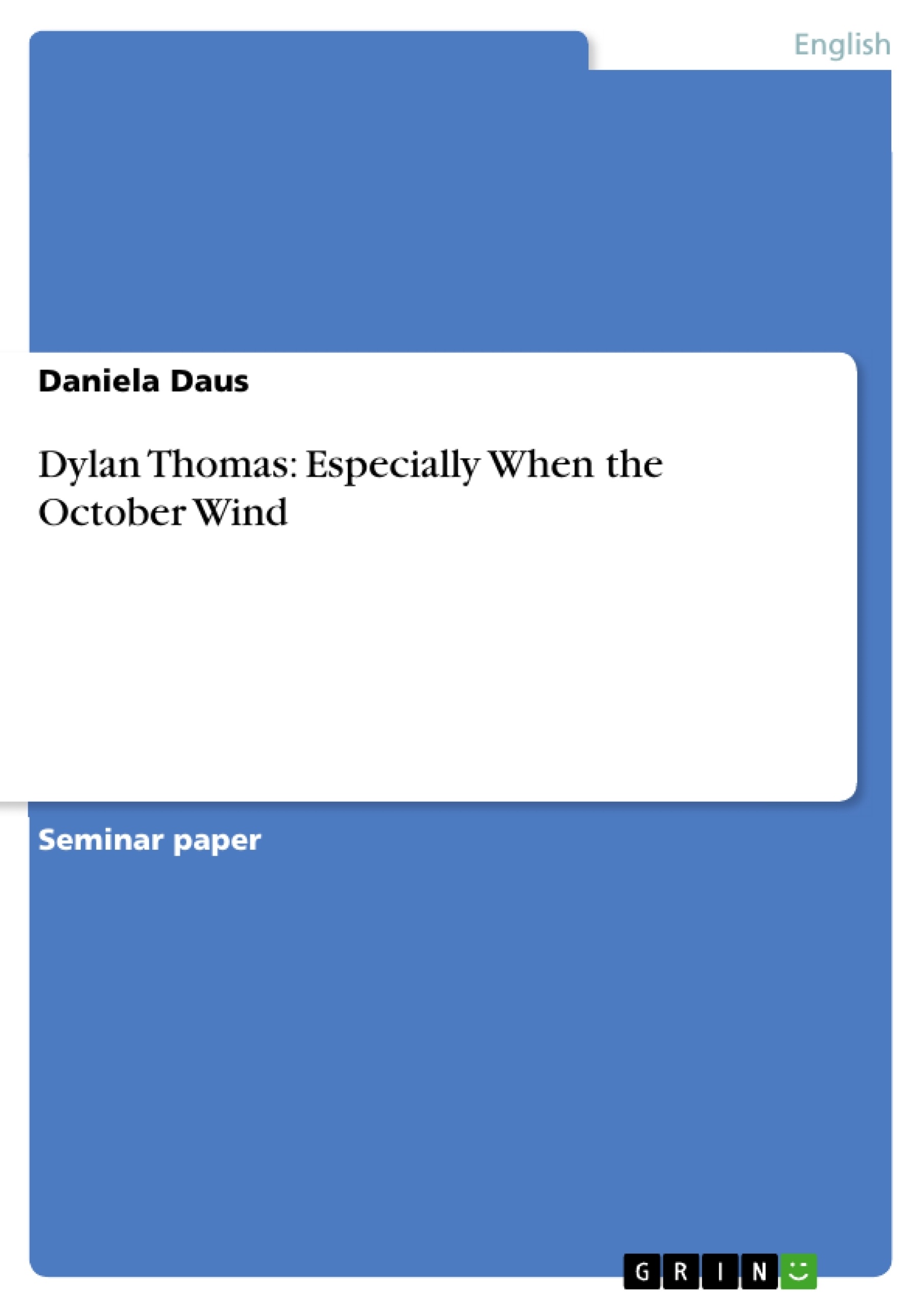Dylan Thomas’s 18 Poems was published in December of 1934, when he was only 20 years old. Even though the poet was almost still a teenager, this collection, “… exhibited the deeper insight and superb craftmanship of a major twentieth century English poet.” Ackerman tells us that18 Poemswas the product of a young and obsessed mind. He also mentions the unity of theme, technique and attitude in Thomas’s first collection of poetry. Actually, the first half of his poetic work was written within eight years. It was produced in his period of adolescence and early manhood. This extraordinary creative period started when Thomas was 16 years old and ended when he was 24 years old. It is very noteworthy that such praised poetry was written at such a young age, since poetry is the most concentrated literary genre. Language is reduced and the core of a problem, or a fact is presented right away. Usually, it takes an experienced and wise mind to produce essential literature like poetry.
The poem, which will be discussed in this paper is “Especially When the October Wind”. It was first published on October 24 in 1934, a couple of days before Dylan’s birthday, though he did not publish it as a ‘birthday poem.’ Later, it was also published as one of Dylan’s18 Poemsand therefore belongs to that highly respected series of poems that Dylan produced as a young man.
Predominantly, it could be labeled as a fall, or “October poem,”7because a fall scene at the seaside is presented. As always with Thomas however, there are various levels of interpretation possible and the fall scene only seems to be the outward layer of a multidimensional understanding of the poem.
Inhaltsverzeichnis (Table of Contents)
- 1.0 Introduction
- 2.0 "Especially When the October Wind"
- 2.1 The Form
- 2.2 The Content
- 2.3 Stylistic Means
- 3.0 Conclusion
- 4.0 Bibliography
Zielsetzung und Themenschwerpunkte (Objectives and Key Themes)
This paper delves into the analysis of Dylan Thomas's poem "Especially When the October Wind," examining its form, content, and stylistic features. It seeks to understand the complexities and nuances of the poem, drawing on various expert interpretations. The author also aims to present their own personal interpretation of the poem, which may differ from those of the experts.
- The unique form and structure of the poem
- The interplay of content and form in conveying the poem's meaning
- The role of stylistic devices in shaping the poem's impact
- The diversity of interpretations possible for Dylan Thomas's poetry
- The author's own personal interpretation of "Especially When the October Wind"
Zusammenfassung der Kapitel (Chapter Summaries)
1.0 Introduction
This chapter introduces the background of Dylan Thomas's 18 Poems collection, noting its publication in 1934 when Thomas was just 20 years old. It highlights the significance of this early collection, demonstrating the depth of his understanding and skill in crafting poetry.
2.0 "Especially When the October Wind"
This chapter focuses on the poem itself, providing an overview of its formal elements. The chapter highlights the poem's four stanzas, each containing eight lines, while also discussing the poem's potential similarities to the Italian sonnet. It notes the use of full and near rhymes within the second and third stanzas, emphasizing the poem's rhythmic and sound patterns.
Schlüsselwörter (Keywords)
The primary keywords and focus topics of this text are: Dylan Thomas, "Especially When the October Wind," poetic form, content analysis, stylistic means, literary interpretation, and personal understanding.
- Quote paper
- Daniela Daus (Author), 2005, Dylan Thomas: Especially When the October Wind, Munich, GRIN Verlag, https://www.grin.com/document/53329



